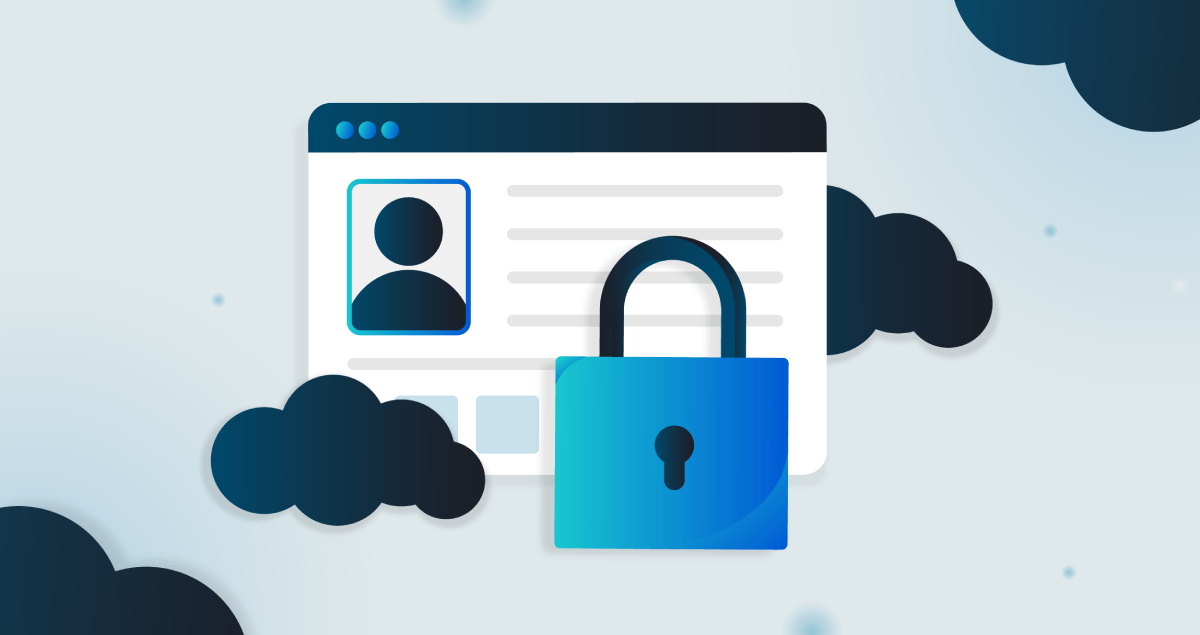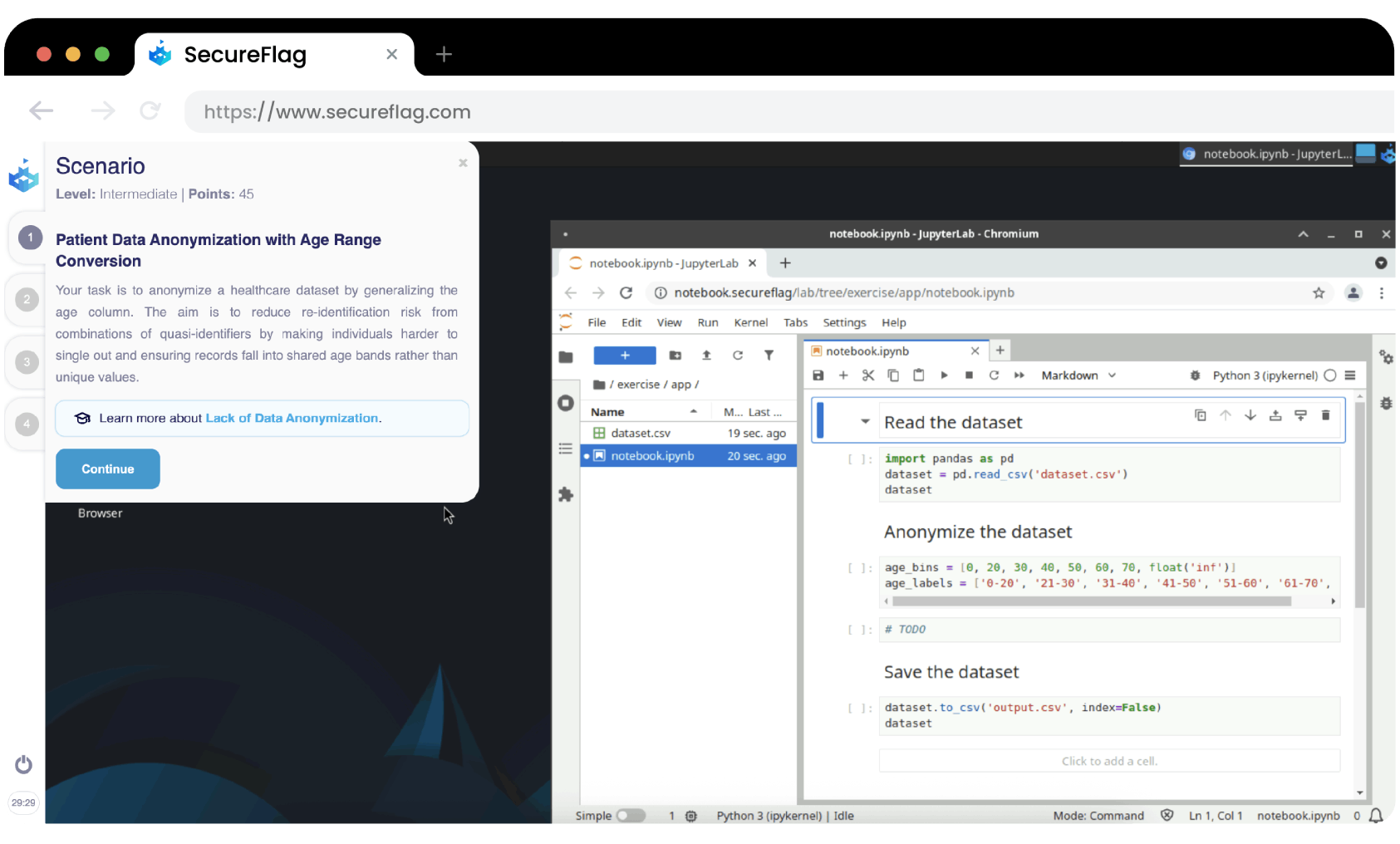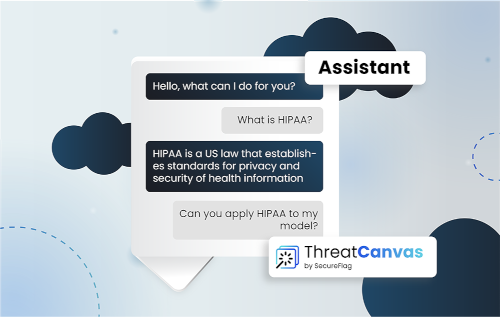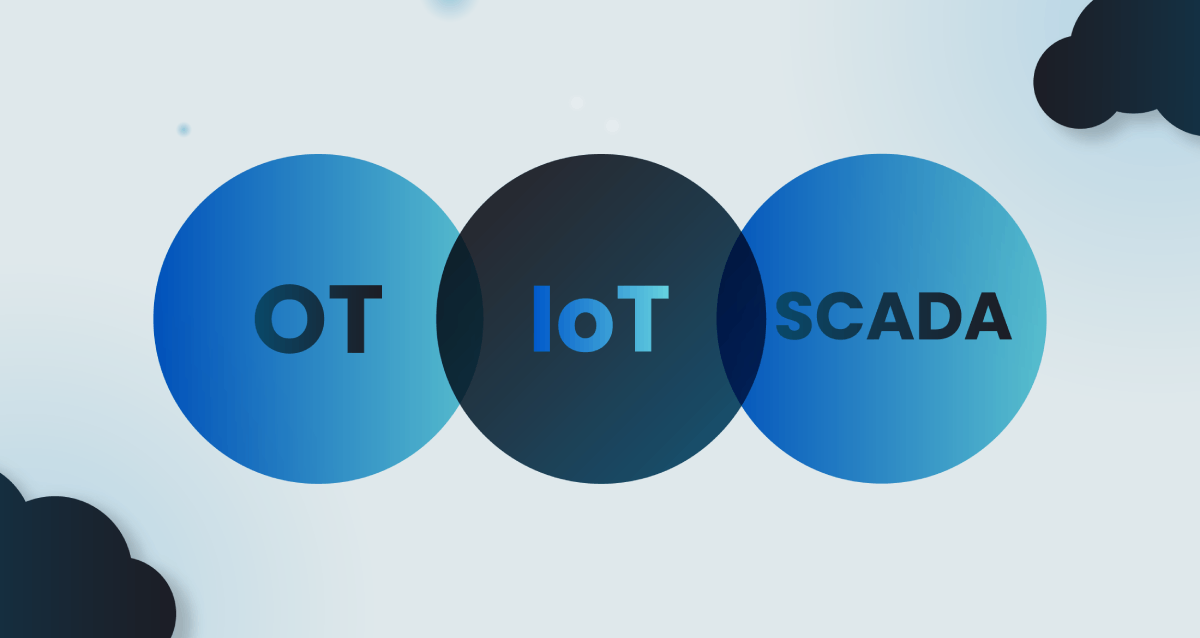When it comes to data security, how sensitive information is handled internally is just as important as external threats. Last year, a report suggested that 46% of breaches exposed personally identifiable information (PII), including emails, phone numbers, and addresses.
SecureFlag’s new data security labs provide developers with practical experience in anonymization, masking, tokenization, and other privacy-preserving techniques. Instead of just reading about the concepts, developers get to implement and test them.

Why Data Security is Essential
OWASP highlights data security as a critical area for today’s applications, particularly in its Application Security Verification Standard (ASVS) and the Web Security Testing Guide.
While encrypting everything at rest or in transit is crucial, developers also need to think about how data is processed, stored, and displayed.
-
Could age data re-identify a patient if combined with other details?
-
Does a support team really need access to raw cardholder information?
-
Is synthetic data sufficient for testing instead of using production data?
-
Does the data collected comply with local privacy regulations?
These are the kinds of data security questions developers face in projects, and the SecureFlag labs let them practice the right approaches to answering them.
Why These Labs Are Important
Even the most secure applications can be compromised if sensitive data is mishandled internally. It’s a type of insider threat that needs to be taken seriously; otherwise, it could have disastrous consequences.
Some risks include:
-
Information leakage through logs: Debugging tools or misconfigured logging can expose personal details that were never meant to leave the application.
-
Overexposed datasets: Using production data for testing or training can result in privacy breaches if the environment isn’t secured.
-
Re-identification attacks: Even “anonymized” data can sometimes be reverse-engineered if identifiers aren’t properly removed or noise isn’t added.
-
Regulatory fines: If safeguards aren’t in place, collecting data can lead to costly regulatory penalties under frameworks such as GDPR, HIPAA, or PCI DSS.
-
Reputational damage: Although there might not be any financial loss, a data breach can still harm your organization’s image and credibility.
With breaches involving stolen or compromised credentials taking an average of 292 days to detect, developers may unknowingly expose sensitive data for months before anyone notices.
When Data Isn’t Protected
A Dutch e-ticketing company exposed nearly 1.9 million customer records, including emails, names, phone numbers, and hashed passwords. The database was copied to an unsecured Azure server during testing, but the data was never anonymized.
The incident shows how well-intentioned processes can backfire if data protection capabilities aren’t applied correctly.
For developers, learning the correct approaches early and maintaining compliance helps prevent these problems before they ever make it into production.
What’s in the Labs
The SecureFlag labs give developers hands-on experience with practical techniques for managing sensitive data:
-
Hiding or masking fields while keeping data usable.
-
Applying anonymization to protect individual identities.
-
Generating synthetic datasets for development and testing.
-
Using machine learning tools to detect and redact sensitive information.
-
Exploring tokenization approaches that balance privacy and reversibility.
-
Utilizing k-anonymity techniques to ensure individuals cannot be re-identified.
Developers write, test, and validate solutions, building skills that can be applied directly to development projects.

Hands-On Training Works Best
Reading about anonymization or tokenization is one way to learn, but putting it into practice through coding is a better way to understand how these methods work.
Practical labs are effective because:
-
Mistakes are safe and part of the learning process.
-
Developers receive immediate feedback on whether their approach works.
-
Practical problem-solving skills are developed that apply to software projects.
-
The implications of real-life security decisions become apparent.
How SecureFlag Helps Developers Protect Data
Developers learn best by doing, and our interactive labs reflect development challenges that offer more than just theory or compliance checklists.
With the new data security labs, teams can strengthen their understanding of how to handle sensitive information responsibly, in line with OWASP guidance.
Explore SecureFlag’s new data security labs and start implementing data protection strategies in a risk-free environment.


